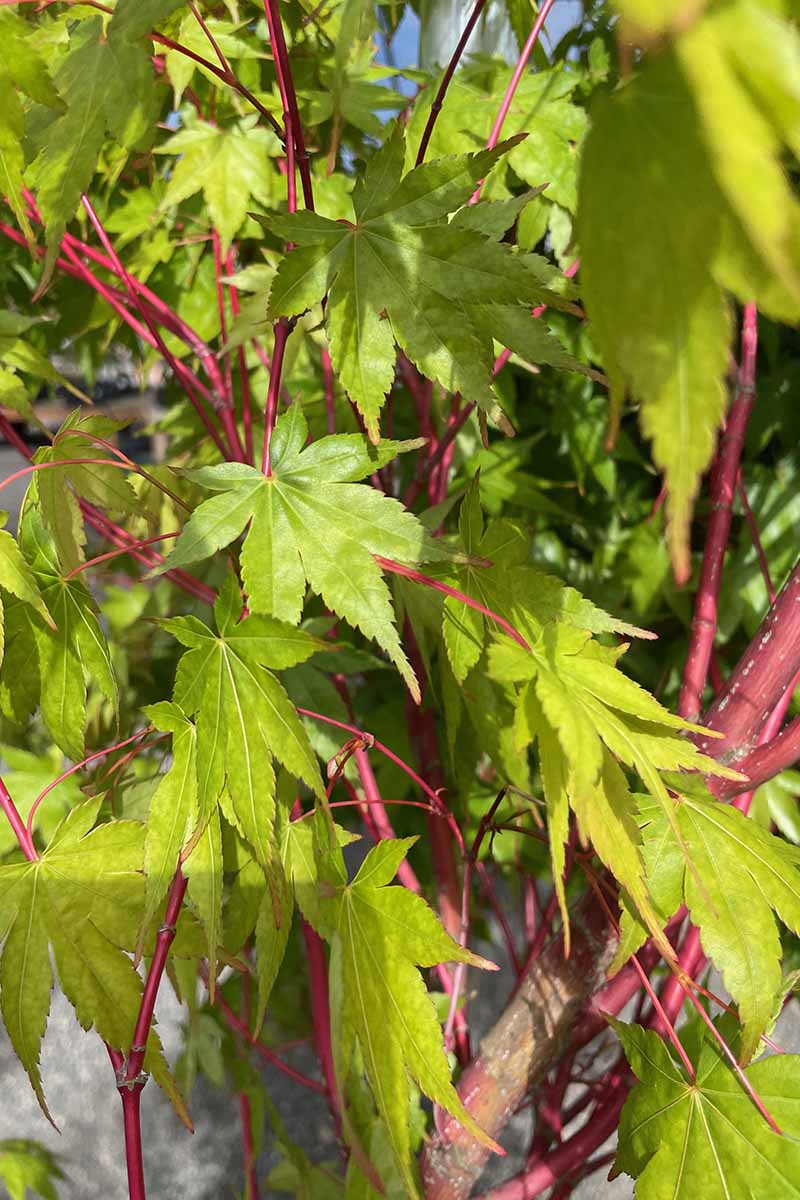

Unlike many plants, where each individual is very much the same as another, these trees are naturally very variable, with different leaf-forms, colors and tree shapes. More than an excuse for a picnic, momiji-gari is considered a lofty spiritual experience. Japanese maple produce small flowers in spring and the seeds are the small ‘keys’ typical of all maples, which twirl down to the ground in fall.įor many centuries the Japanese people have travelled to the countryside to see the fall color, like east-coast Americans admiring the sugar maple. However the leaves are much smaller than on typical maple trees and since many garden forms have deeply divided leaves they may not be immediately recognized as maple trees. Being a maple tree it has the typical lobed leaf, with veins spreading out like the fingers of a hand and ending in five to nine lobes, with one lobe in the centre of the leaf. This tree grows in the shade of larger forest trees, which is why it is more shade-tolerant than most other deciduous trees. The bark is smooth and gray on older limbs, but green, red or sometimes pink on younger shoots. As a wild tree it grows 20-35 feet tall, occasionally more, and usually has several trunks, rather than a single central trunk. Japanese maples grow wild across the hills of Japan, Korea and into Mongolia and Russia too. Use the fungicide in the safest and most effective manner possible.Butterfly Japanese Maple $79.50 – $139.50 Label instructions of the fungicide that you select to insure that you Three treatments may be needed forĪdequate control: one at bud break, one when leaves are half expanded,Īnd one when leaves are fully expanded. With a fungicide containing chlorothalonil, copper, mancozeb, neem oil, Leaf spot for several years, may benefit from treatments Newly planted maples,Īnd established maples that have been severely affected by The fall, or in the spring before trees re-leaf. Occasionally, theĭisease may defoliate trees early in the growing season, but these treesĪre typically able to produce new leaves within a few weeks.ĭefoliated trees should be watered (about one inch of water per week),Īnd properly fertilized (based on a soil nutrient test).Ĭompost, bury or burn leaf litter from infected trees in Lead to additional infections within the tree canopy throughout theĪlthough leaf spot may look unsightly, theĭisease is usually only a cosmetic problem, rarely causing significantĭamage to mature and vigorously-growing trees. Spores of the fungus from the leaf litter to newly developing maple This leaf spot is caused by the fungus Phyllosticta minima As spots mature, the centers mayįall out, leaving roughly circular holes. Tiny,īlack, pimple-like reproductive structures (called pycnidia) often form Tan to brown centers and typically a purple, red, or brown margins. Of maple such as anthracnose and tar spot. Phyllosticta leaf spot is similar in many ways to other foliar diseases (in particular Amur, Japanese, red, silver and sugar maple). Spot, a common, but primarily cosmetic disease that affects maples I can't quite tell with the Jap Maple foliage being purple, but the condition appears to be eye spot or Phyllosticta leaf the maple leaf spots have struck again! What can I do to prevent this from happening? 1st, no need to panic regarding the seedlings' health, they will be fine.


 0 kommentar(er)
0 kommentar(er)
